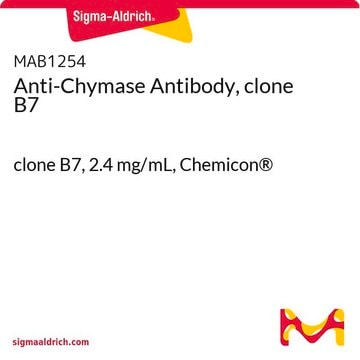一般說明
Microtubule-associated protein tau (UniProt P10636; also known as Neurofibrillary tangle protein, Paired helical filament-tau, PHF-tau) is encoded by the MAPT (also known as MAPTL, MTBT1, TAU) gene (Gene ID 4137) in human. Extracellular plaque deposits composed of amyloid-β and intracellular neurofibrillary tangles (NFTs) composed of truncated and hyperphosphorylated tau are two neuropathological hallmarks of Alzheimer′s disease (AD). Tau pathology (tauopathy) can cause toxicity when the brain is devoid of amyloid plaques, and tangle pathology correlates better with clinical dementia than amyloid pathology. Abnormal processing of tau by hyperphosphorylation and proteolytic truncation contribute to the toxicity of tau. Tau also undergoes other types of posttranslational modifications, including glycosylation, ubiquitination, glycation, polyamination, nitration, and lysine methylation, which are believed to be important for its non-pathological functions, including polymerization and stabilization of microtubules. Alternative splicings result in multiple Tau isoforms, including five human Tau spliced isoforms with four C-terminal microtubule-binding repeats/domains (RD4) and four spliced isoforms that contain only three microtubule-binding domains (RD3) due to the absence of exon 10-conding sequence. Isoform-specific antibodies are useful tools for analyzing tau isoforms expression and distribution as well as pathological changes in the human brain.
特異性
Clone 7D12.1 targets an epitope sequence present in Tau spliced isoforms with four C-terminal microtubule-binding repeats/domains (RD4), including human isoforms PNS-tau, Tau-D, Tau-E, Tau-F, and Tau-G, but not Tau spliced isoforms that contain only three microtubule-binding domains (RD3) due to the absence of exon 10-conding sequence (human isoforms Fetal-tau, Tau-A, Tau-B, and Tau-C).
免疫原
Epitope: Junction-flanking region coded by adjacent exons 9 & 10.
KLH-conjugated synthetic peptide (VQIINKKLDLSNVQSKC) corresponding to a junction-flanking sequence coded by adjacent exons 9 & 10 of Tau. The immunizing sequence is identical in human, rat, mouse and bovine.
應用
Immunohistochemistry Analysis: A 1:50-250 dilution from a representative lot detected Tau 4-repeat isoforms in Alzheimer′s diseased (AD) human brain, as well as human kidney and non-AD brain tissue sections.
Research Category
Neuroscience
Research Sub Category
Neurodegenerative Diseases
This Anti-Tau Antibody, clone 7D12.1 is validated for use in Western Blotting, Immunohistochemistry (Paraffin) for the detection of Tau (4-repeat isoform RD4).
品質
Evaluated by Western Blotting in rat brain tissue cytosol lysate.
Western Blotting Analysis: 0.1 µg/mL of this antibody detected Tau 4-repeat isoforms in 10 µg of rat brain tissue cytosol lysate.
標靶描述
~45-58 kDa observed. 78,80 kDa (human isoform 1; PNS-tau), 39.88 kDa (human isoform 6; Tau-D), 42.84 kDa (human isoform 7; Tau-E), 45.72 kDa (human isoform 8; Tau-F), 80.81 kDa (human isoform 9; Tau-G) calculated (Met1 removed).
外觀
Protein G purified.
Format: Purified
Purified mouse monoclonal IgG1κ antibody in buffer containing 0.1 M Tris-Glycine (pH 7.4), 150 mM NaCl with 0.05% sodium azide.
儲存和穩定性
Stable for 1 year at 2-8°C from date of receipt.
其他說明
Concentration: Please refer to lot specific datasheet.
免責聲明
Unless otherwise stated in our catalog or other company documentation accompanying the product(s), our products are intended for research use only and are not to be used for any other purpose, which includes but is not limited to, unauthorized commercial uses, in vitro diagnostic uses, ex vivo or in vivo therapeutic uses or any type of consumption or application to humans or animals.








